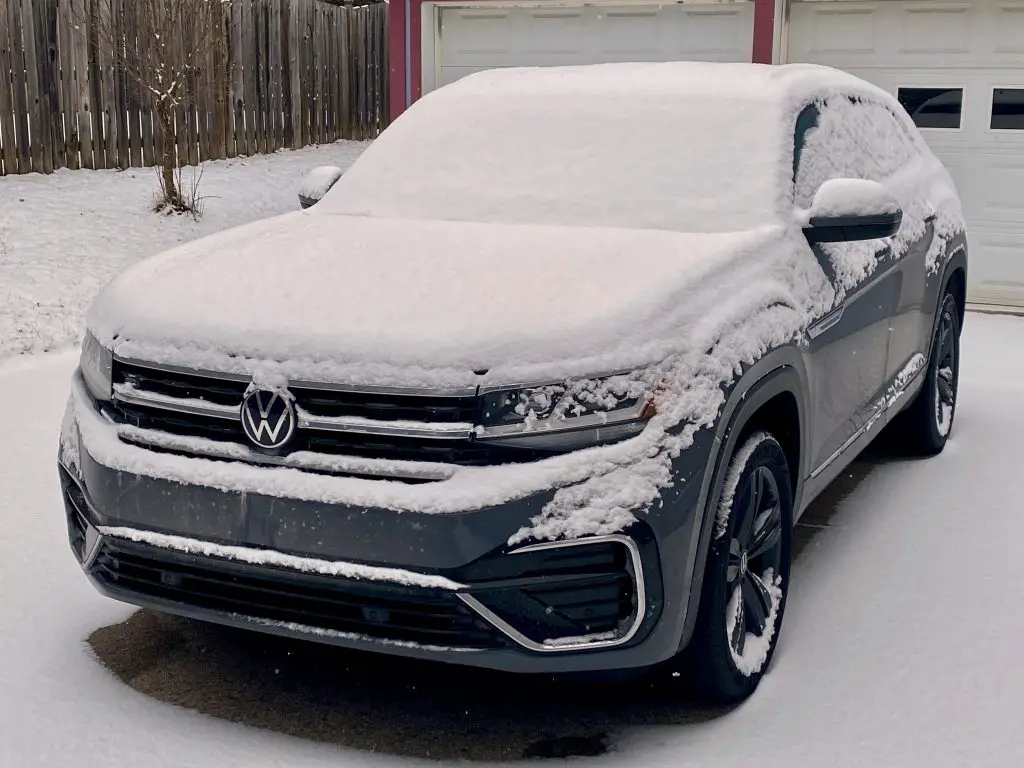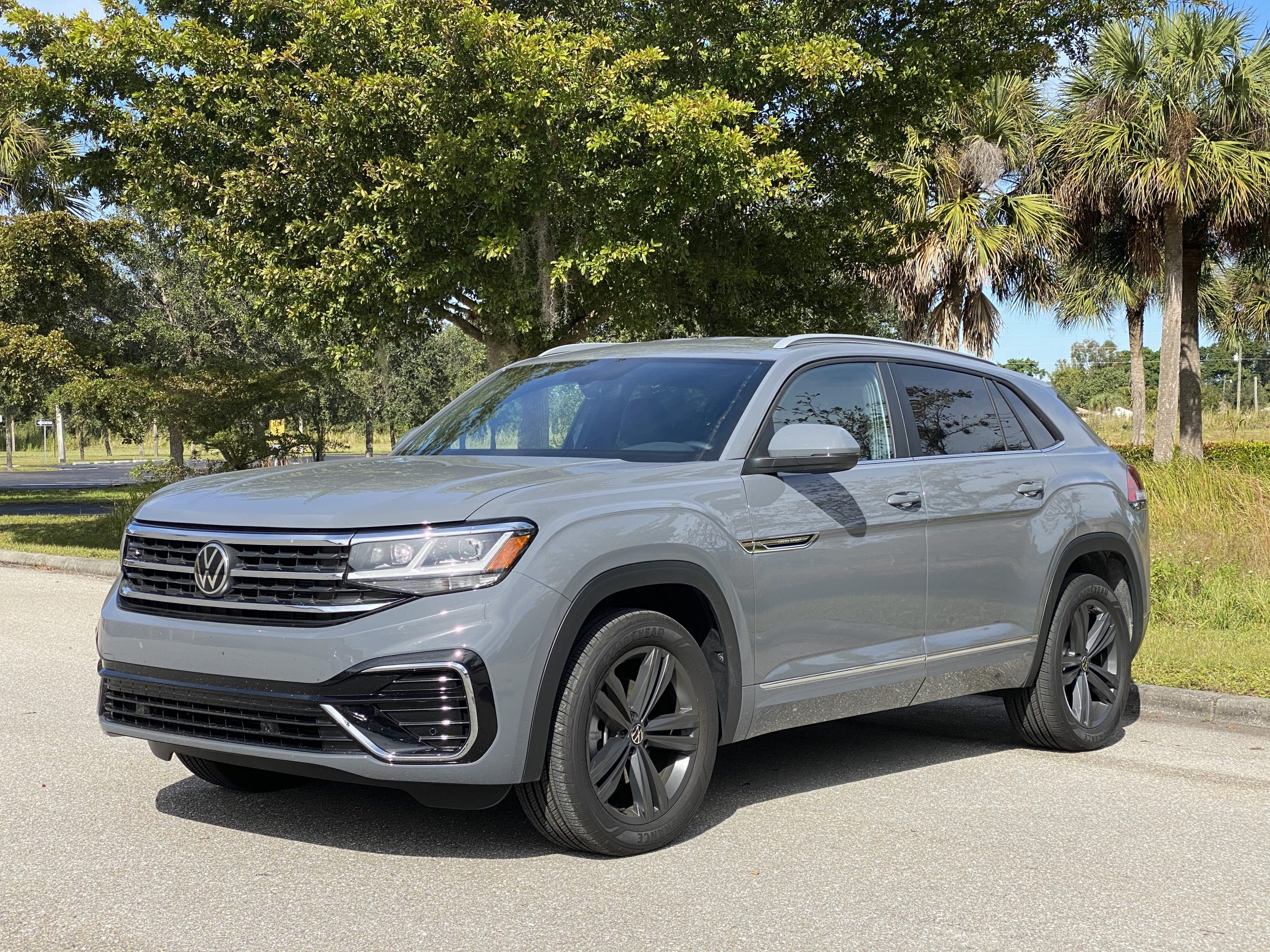Editor’s Note: We’re taking an effort to expand our vehicle review coverage to include models that compete head to head with General Motors product. This is our third competitive review in the last month with more on the way. Enjoy.
—–
The Volkswagen Atlas Cross Sport is big, brawny, spacious, well-appointed, reasonably frugal in fuel use and a solid value in its class. Driving to Florida presented an opportunity to live with a 2020 Atlas Cross Sport outlasting and out distancing a typical week-long loan.
Several years ago, Volkswagen abandoned the Euro-centric Touareg in favor of an American designed and engineered three-row mid-sized SUV—Atlas—meant for larger families. Atlas Cross Sport has only two rows, similar behind-the-seat storage and measures 5.2-inches less in length and 2.2-inches in height. What it does not abandoned is visual muscularity.
VW says mid-sized five-seat SUVs account for 45-percent of the market. To compete against Ford’s Edge, Jeep’s Grand Cherokee or Chevrolet’s Blazer and Traverse, VW equips Cross Sport with either a four-cylinder or the 3.6L V6 engine with 276 hp and 266 lb-ft of torque I drove, which still delivered 20+ mpg overall.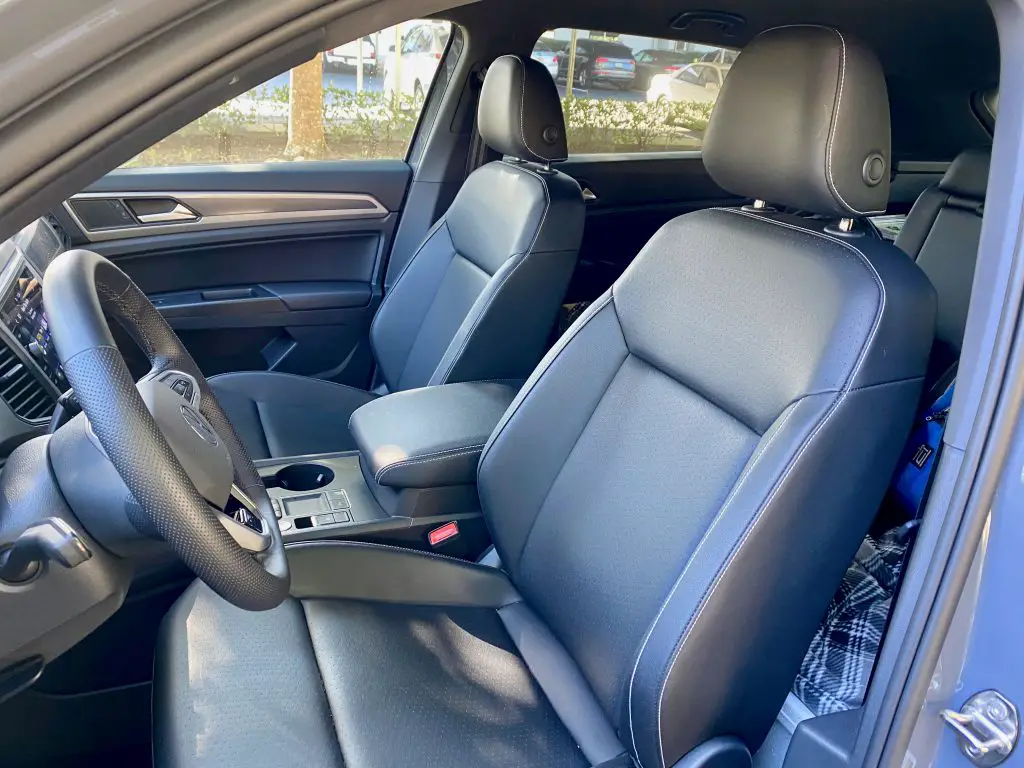
Pitted against a Chevrolet Blazer it has the better of horsepower from its V-6 or 2.0L I-4, each coupled to an 8-speed transmission. Versus Traverse, which of course is a three-row and a better competitor to Atlas, VW has the better of engine power, though Traverse uses a 9-speed transmission.
Manufacturers, all of them, love marketing-speak. For once it rang true. I never walked up to the Cross Sport without noticing how brawny the wheel arches were, how tall the cabin window line appeared. Cross Sport is a Cross Fit survivor while Traverse seems to have been cloned from Suburban. Blazer is far edgier, more angled, more Tom Cruise than Dave Bautista.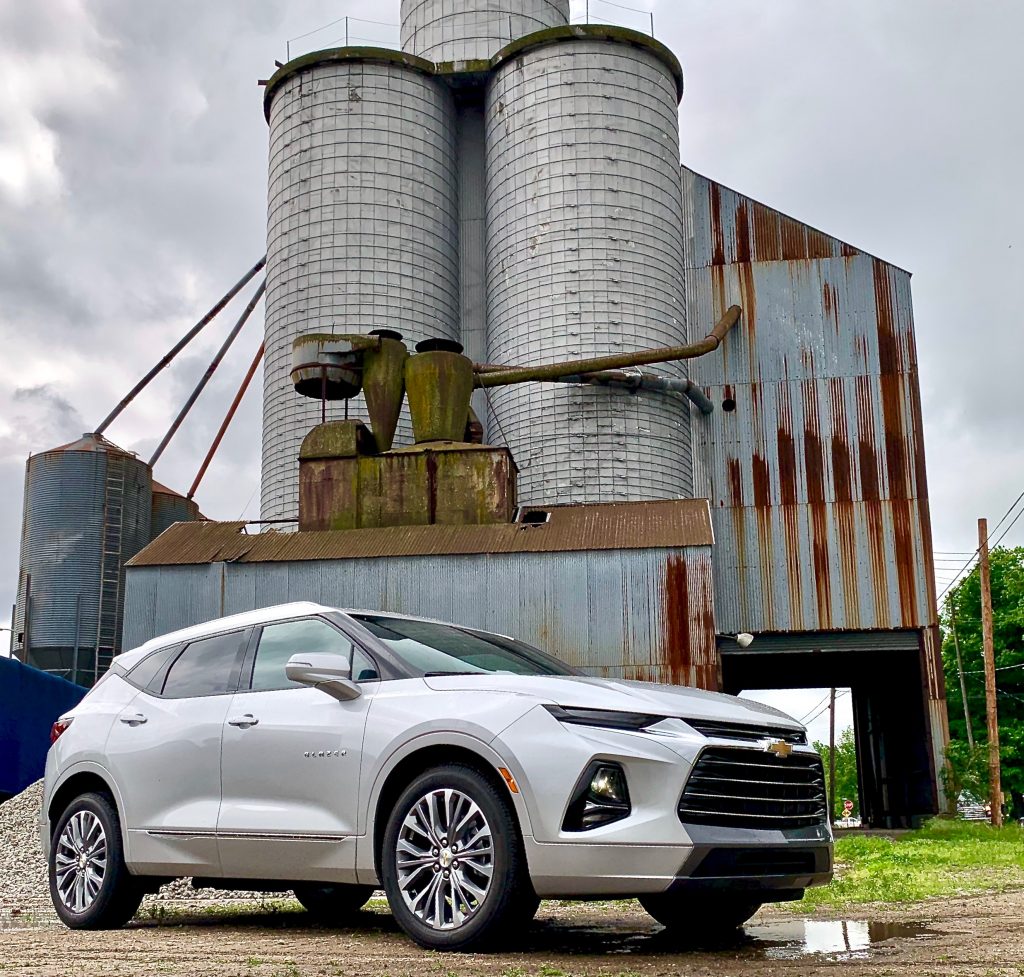
From side or rear, VW’s faster D-pillar doesn’t compare to the vast greenhouse created by Traverse’s wrap-around glass, appearing more like Blazer’s elegant rear panel design. Comparing styling, hugely subjective as always, Blazer is the chic style-driven young family choice, Traverse arrives at mid-life with more kids, and Cross Sport slips somewhere into the mix as a sophisticated European alternative.
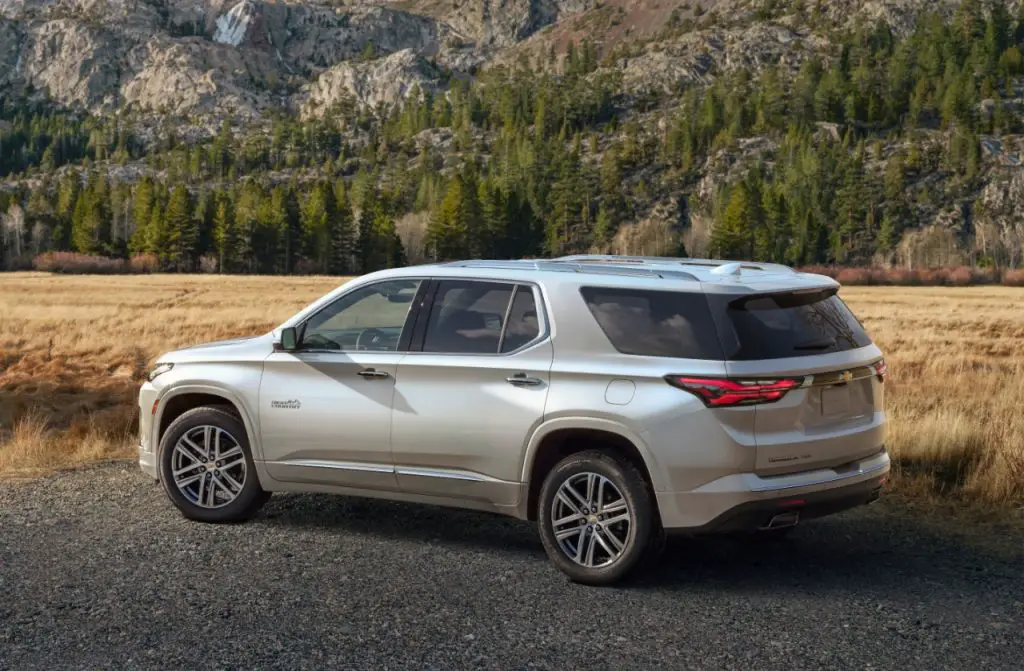
Interior design delivers even greater differentiation. Now that many interiors seem designed by Danish firm Bang and Olufsen, Blazer offers the slickest GM design outside of Cadillac. Traverse has Chevy’s traditionally cluttered design. Atlas, in the R-Line I drove, is spartan and flat to the point of Zen-like Chill, all black, flat and stitched for accents. While driving, Atlas’s Zen approach keeps your eyes ahead, any other moment Blazer’s coolness looks even better.
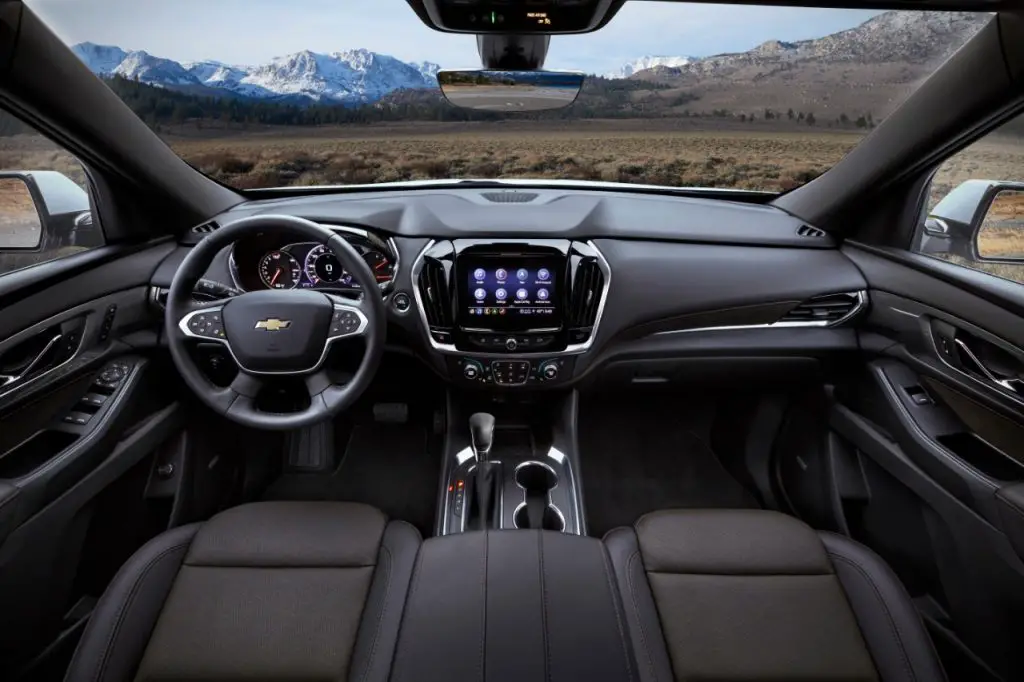
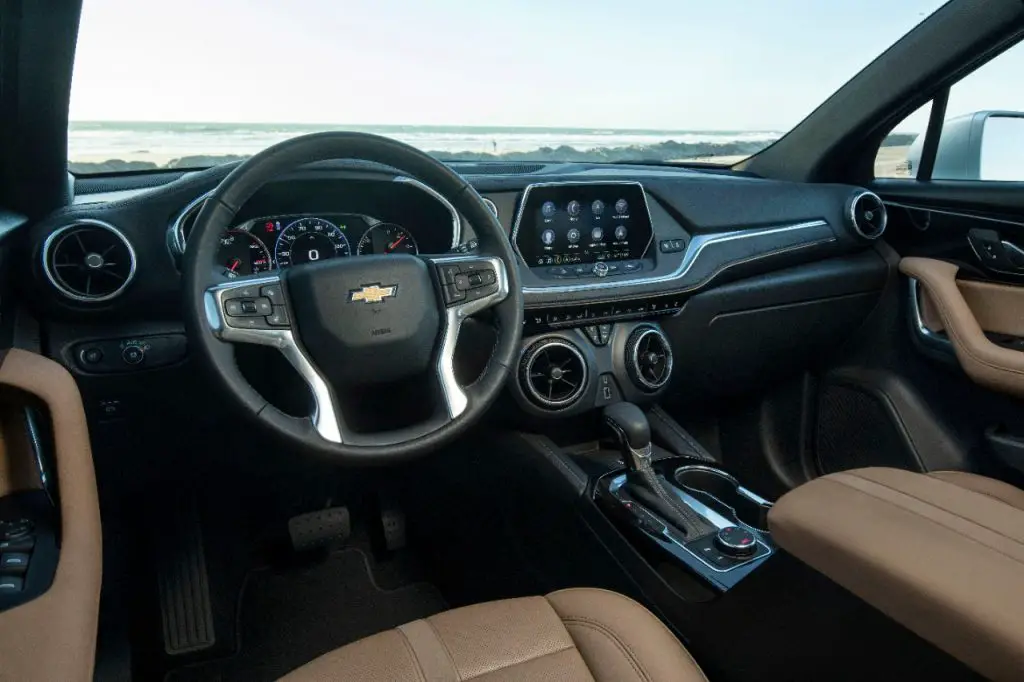
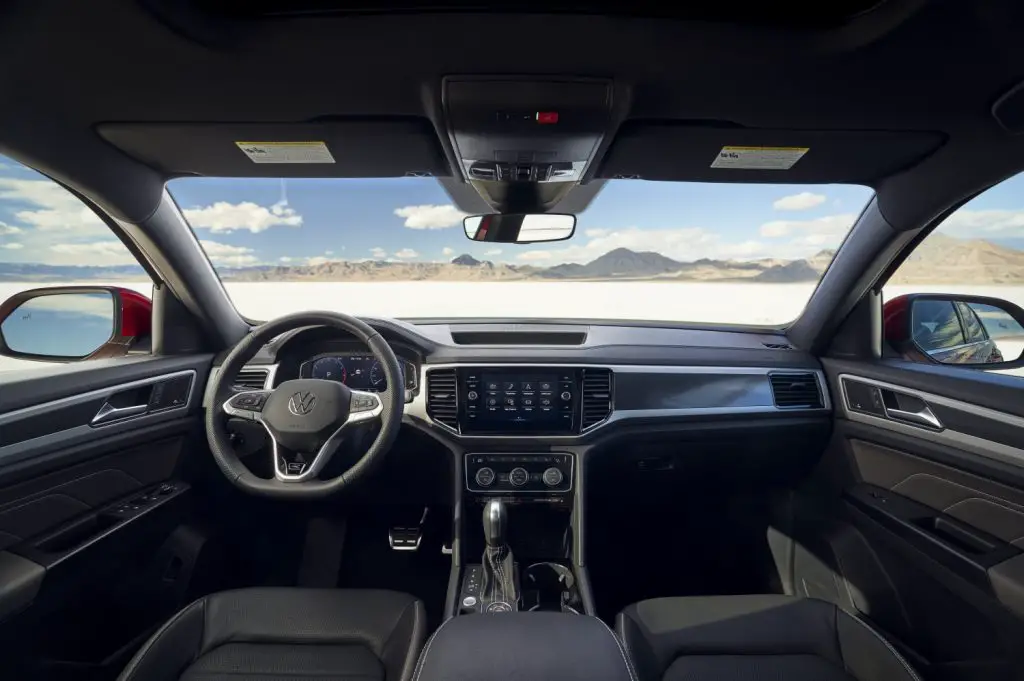
Once inside, Cross Sport felt large, almost huge, yet it was nimble and drove like a compact. As I continued late into the night I could appreciate the standard LED headlights, which on the SE are a bit less-bright than on the SEL I’d driven previously. They’re still bright and VW adds cornering lights, which is great once into neighborhoods.
Travel notes pointed South:
Atlas’ steering is more like a GTI than anything in its competitive set and actually could use a bit more laxity on-center as I-75 isn’t Road Atlanta. VW’s stop-start is quite clunky (there are better versions and GM has some of them), but does function well. The SE Tech R-Line had radar cruise which is always an adventure in adaptation, and all the controls were quickly at hand. I used Apple CarPlay for audio and navigation as the Atlas Cross Sport SE has a standard infotainment system without navigation.
Features available on SEL and above that I missed having were LKA (lane keeping assist), automatic high beams and a heated steering wheel. Each is a valuable option, but not part of the SE’s $38,745 package. A note about Lane Keeping Assist—VW’s is among the best and I wish I’d had it for each leg of the journey, primarily because of the Cross Sport’s super-fast steering response.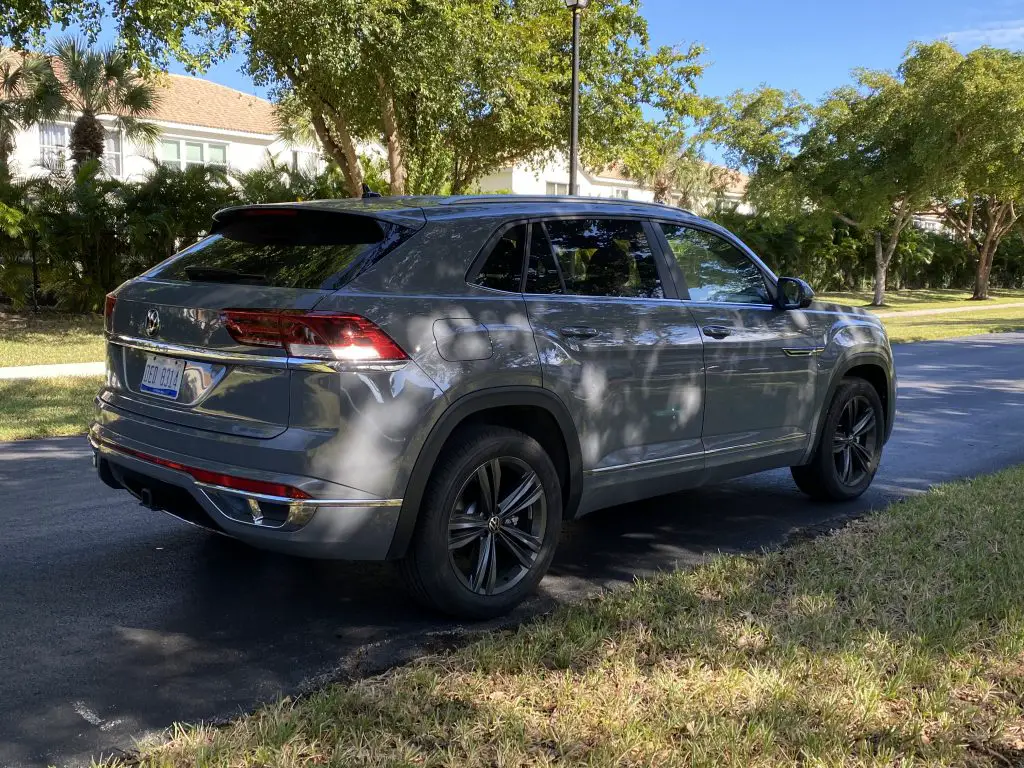
In Florida a Blazer-size vehicle would have been preferable for maneuverability, parking and outward visibility, though the higher hood deck and reduced forward vision became normal. One attribute I didn’t care for was the backup camera. Yes, it came on precisely after engaging Reverse, yet stayed on until about 5 mph when doors auto-locked. And, after a week I’d re-trained the powertrain controller not to jack-rabbit start, which came as a relief as I’d been feathering the throttle to avoid wheel spin.
I-75 North
The only issue I experienced with Atlas Cross Sport was during the drive back to Michigan, a snow-sleet-rain storm from north of Atlanta into Indiana.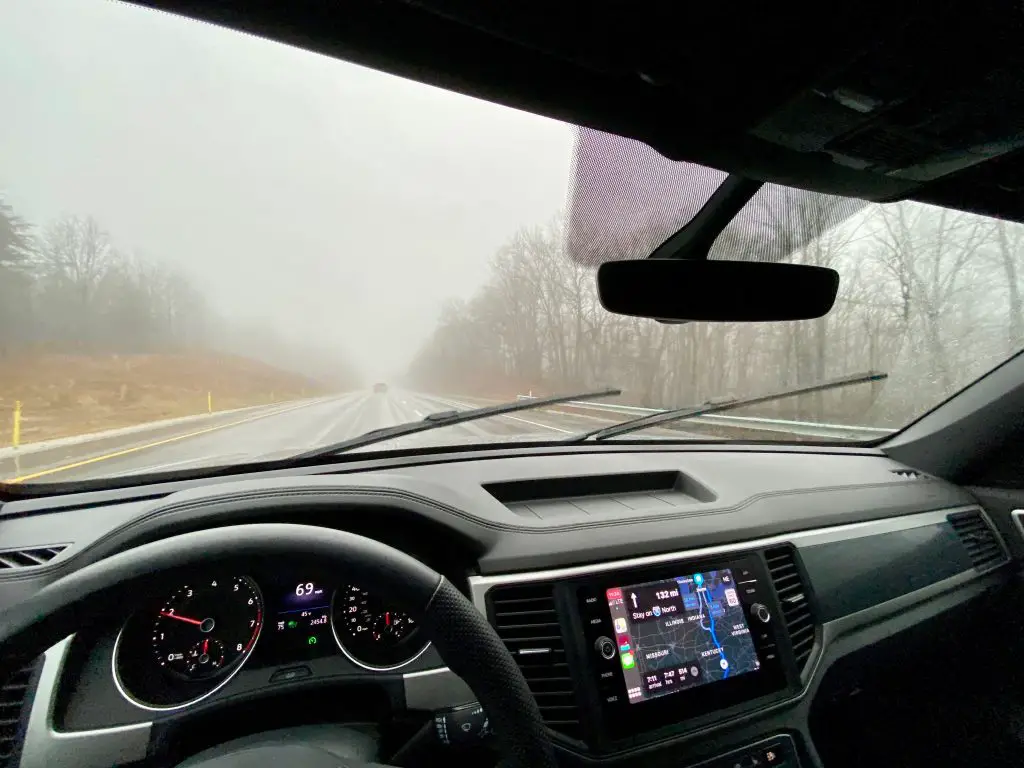
I’d become used to the very crisp and direct steering and how it handled; Cross Sport delivers a more sports car-like ride compared to the softer suspension and greater body roll of many SUV’s. While the vehicle was FWD (I’d have preferred an AWD version) there were no issues with grip, steering, or significant hydroplaning. Goodyear Assurance tires proved better than typical LRR (low rolling resistance) tires fitted to most vehicles today. No, the issue was caused by freezing sleet/snow which iced over the radar sensors and prevented cruise control from operating. Volkswagen, this needs to be fixed!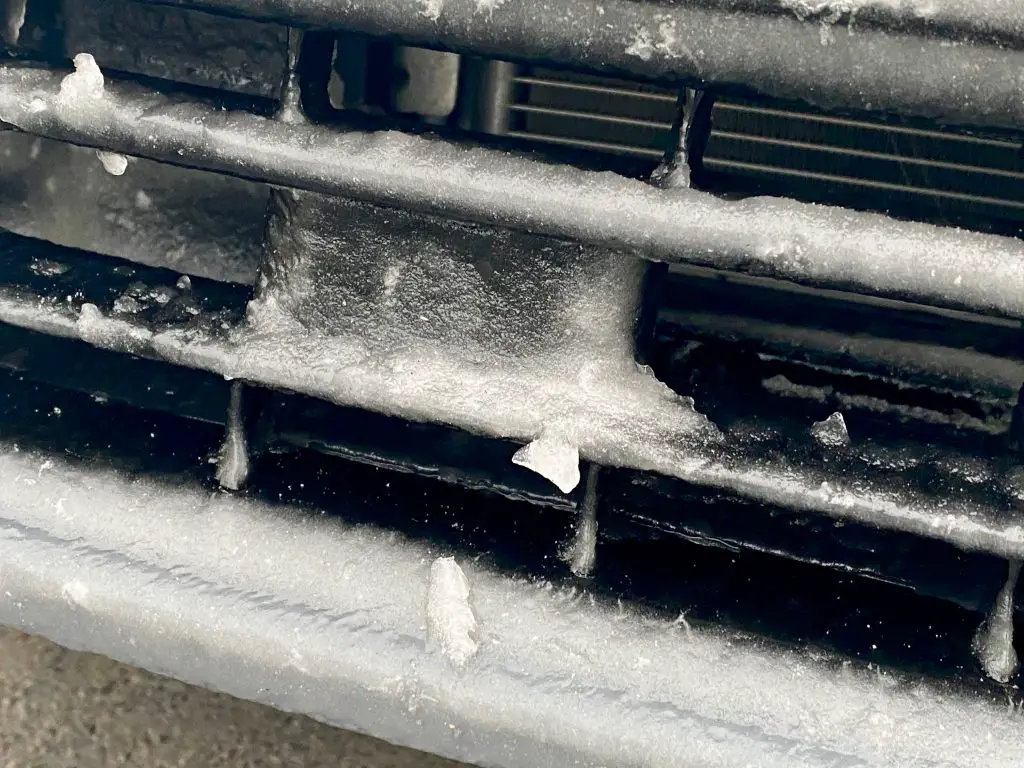
Why? In snow or icing conditions, every bit of focus—like throttle control—that’s not on surrounding traffic is wasted.
After 3,020 miles these are my take-aways. Volkswagen’s Atlas Cross Sport is a very impressive vehicle with an acre-long hood, yet I never had the sensation that I didn’t know where in space the front bumper was. I used Apple Car Play and the Siri access button frequently with good results and Atlas is incredibly roomy with deep and wide seating for five. Its AEB or automatic braking function worked well, sometimes telling me to break before it engaged and with a bright red signal if it thought closing speed and distance suggested impending impact.
Less than stellar are the positions of the left side on-steering wheel cruise controls. They’re too close to the audio volume toggle. Also, it had the same infotainment issue I experienced in its elder brother, which is that when using the rotary volume control your little finger may brush the surface and change functions. Annoying, but hardly crucial. So overall would I have it?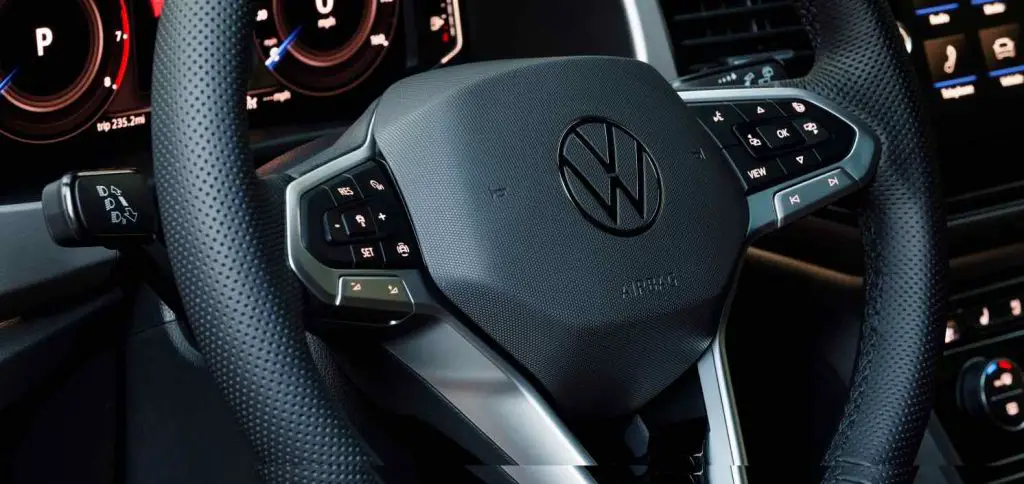
While the Blazer Premium would be my choice, a Blazer 2LT is closer to similarity but has cloth seats and I-4 engine at $32,800. A three-row Traverse LT FWD with leather seating starts at $37,045 before a $1,185 blackout package to better match the R-Line. Traverse, of course, is better compared to Atlas with three rows. But we’re sticking with mid-sized.
Ultimately the choice is yours, and we somewhat favor Atlas Cross Sport SE R-Line for its greater standard safety equipment package. But if push came to a signature, the emotional value of Blazer’s interior likely would tip the balance.